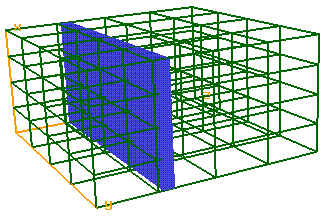
Numerical Simulations
Computational hydrodynamics is one of those fortunate problems that
adapts nicely to parallel computing. If your desktop workstation can
evolve a 2D simulation in an hour, then a few hundred such computers
can do a comparable 3D simulation in an hour.
 Our parallel version of VH-1 using MPI is extremely simple, but it
works very well and maintains the adaptability of VH-1 that has
made it so successful. Our approach is to break up
the 3D domain into 2D planes, with each plane computed on a
different processor. Evolution in the direction across planes
is computed locally
on individual processors after the data is transposed across
processors with a single MPI_ALLTOALL call.
Our parallel version of VH-1 using MPI is extremely simple, but it
works very well and maintains the adaptability of VH-1 that has
made it so successful. Our approach is to break up
the 3D domain into 2D planes, with each plane computed on a
different processor. Evolution in the direction across planes
is computed locally
on individual processors after the data is transposed across
processors with a single MPI_ALLTOALL call.
http://wonka.physics.ncsu.edu/pub/VH-1
 Our parallel version of VH-1 using MPI is extremely simple, but it
works very well and maintains the adaptability of VH-1 that has
made it so successful. Our approach is to break up
the 3D domain into 2D planes, with each plane computed on a
different processor. Evolution in the direction across planes
is computed locally
on individual processors after the data is transposed across
processors with a single MPI_ALLTOALL call.
Our parallel version of VH-1 using MPI is extremely simple, but it
works very well and maintains the adaptability of VH-1 that has
made it so successful. Our approach is to break up
the 3D domain into 2D planes, with each plane computed on a
different processor. Evolution in the direction across planes
is computed locally
on individual processors after the data is transposed across
processors with a single MPI_ALLTOALL call.
